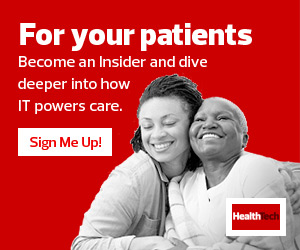2. Focus on Simplicity First, Then Build on Success
Avoid overcomplicating RPM. Keep it as simple as you can and build success incrementally. One of most effective kinds of RPM is the phone call. For example, our health systems uses structured discharge phone calls with the patient, which can be made by staff members or by an automated phone system.
Simple RPM approaches exist for a number of diseases. CHF is one of them because patient monitoring is straightforward; it typically involves having patients use a scale to record their weight. If the weight starts to increase, you can quickly manage the situation before problems occur. Diabetes is another good example; if you monitor a patient’s blood sugar, it’s easy to intervene.
The issues you monitor should be those you can address with an action such as changing a patient’s medication or increasing the dosage.
3. Choose Devices That Best Meet Your Needs
Hospitals have several options for managing RPM devices. Some manage the entire process in-house: The provider buys and configures the devices so they feed patient data to the electronic health record. Some hire companies to handle the entire RPM process, including case management. Each hospital should choose the approach that works best for its patients and staff.
In making this decision, you need to understand where you have the necessary expertise and bandwidth. Devices may break or malfunction, and you can’t just leave patients to troubleshoot on their own or they’ll abandon the endeavor. Decide what you’re willing to take on and what’s cost-effective.
MORE FROM HEALTHTECH: Read how to keep telehealth secure.
4. Make Sure Objectives and Processes Are Clear
The most important thing to communicate about RPM is why you’re doing it. Both the staff and patients need to believe in what you’re doing; otherwise, participation will quickly fade.
Tailor communication toward each group. Both clinicians and patients must understand the training they receive: Patients must demonstrate that they can submit their weight electronically; if they can’t, they need further training. Clinicians must be able to determine which patients are having problems.
When you’re running an RPM program, you also must ensure the technology works. For example, if you send a patient home with a scale that depends on internet access, but the patient doesn’t have internet at home, you need to find a way to provide it, such as through a cellular device.
Ultimately, ensure you have processes for emergencies. If a patient reports an abrupt, massive weight increase or alarming psychiatric symptoms, near real-time response expectations must be clear for all stakeholders.












